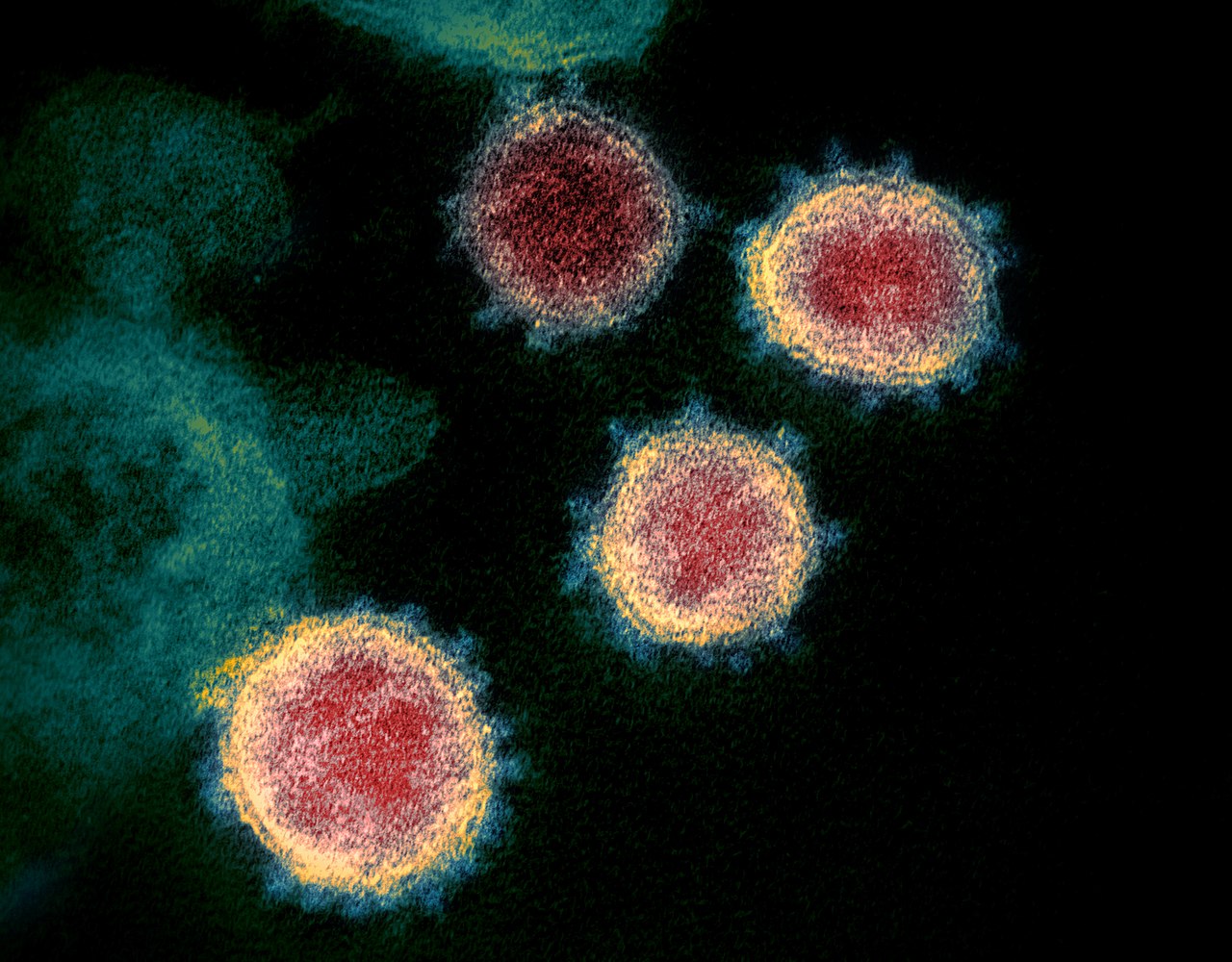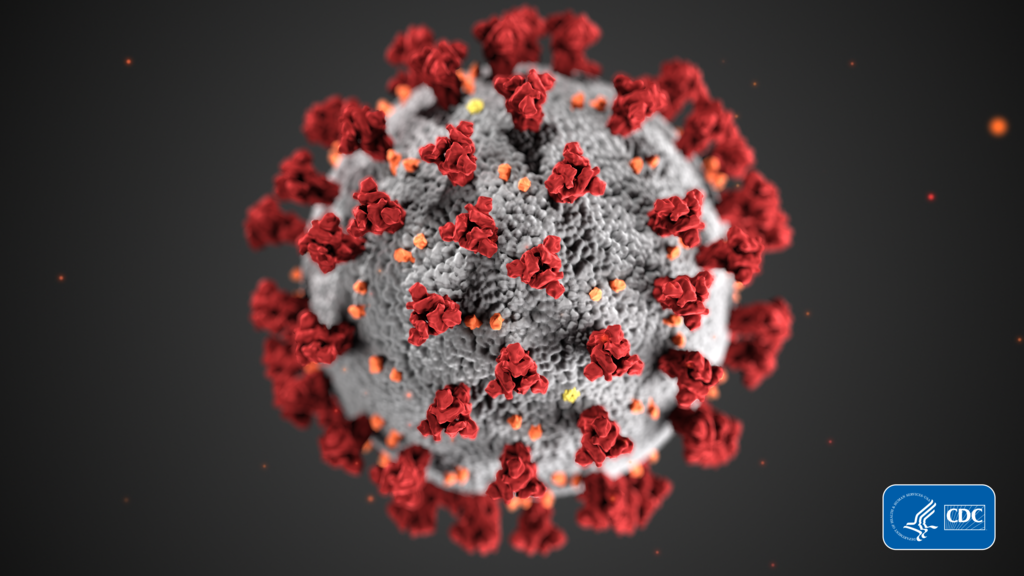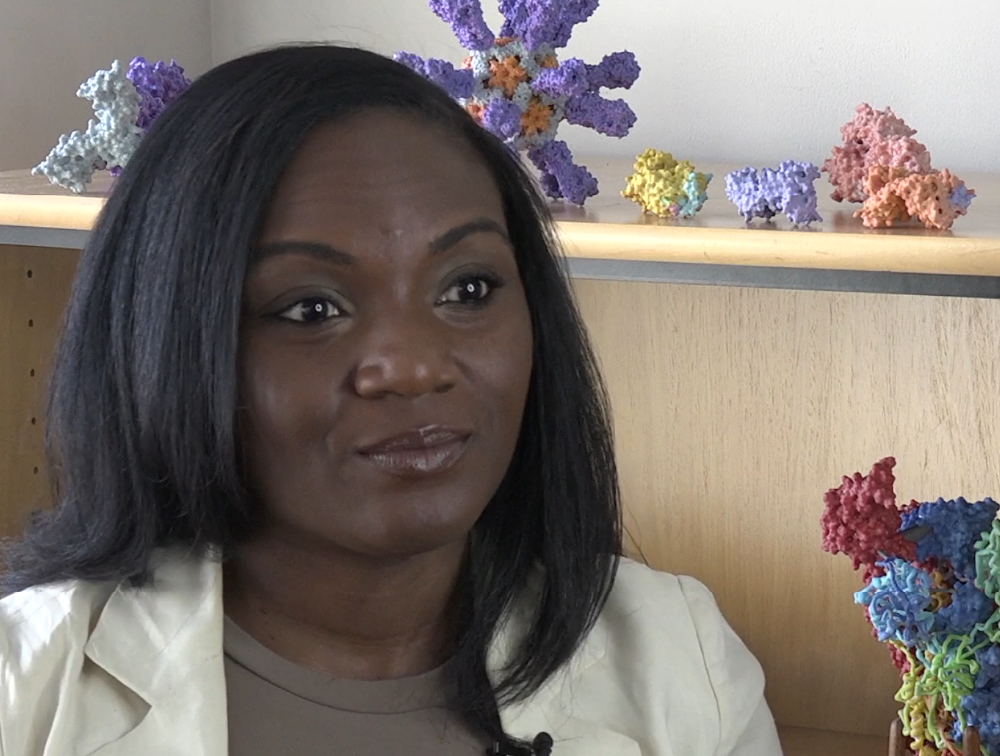Companies and scientists around the world are racing to create vaccines to help protect people against the new coronavirus, SARS-CoV-2. Because the coronavirus is so serious, the process is happening much more quickly than normal.
COVID-19 is caused by a virus called SARS-CoV-2. The virus has changed life around the world, making millions of people sick, and killing over 650,000.

(Source: NIAID [CC BY], via Wikimedia Commons.)
Currently over 140 different coronavirus vaccines are being developed. Vaccines help the body create “antibodies” – chemicals specially designed to attack a disease.
There are many different ways to make vaccines. Many of the new vaccines may not work or may cause other problems. That makes testing them very important.
Testing Vaccines
Before vaccines are tested on humans, they’re first tested on animals. If animal testing seems safe, human testing is done in several steps, called “phases”.
Phase 1: a small group of people are given small amounts of the vaccine, to see if it has any bad effects.
Phase 2: trials begin with a larger group of people. Phase 2 still tests the vaccine’s safety, but mainly tests to see if the vaccine seems to work.
Phase 3: The vaccine is tried on a much larger group of people to see how well it works.
Because of the rush, some research groups have combined some of these testing phases.
😕
This image has not been loaded because of your cookie choices. To view the content, you can accept 'Non-necessary' cookies.
There are many different ways to make vaccines. Currently over 140 different coronavirus vaccines are being developed around the world. Above, workers at a vaccine lab in Shenyang, China.
Normally, vaccines take seven or more years to develop. But the process is being rushed because of how serious the coronavirus is. Several countries hope to have a vaccine ready before the end of the year.
Four vaccines seem to be leading the way. All of them seem to have some effect at training the body to fight the coronavirus. Scientists know this by testing for antibodies. The vaccines also have some negative effects, such as pain, headaches, and fevers. All are now moving to Phase 3, the final level of testing.
😕
This image has not been loaded because of your cookie choices. To view the content, you can accept 'Non-necessary' cookies.
Four leading coronavirus vaccines have been shown to have some effect at training the body to fight the coronavirus. Scientists know this by testing for antibodies. Above, a scientist works on a coronavirus vaccine at Oxford University’s Churchill Hospital.
Two of the vaccines work by mixing small bits of the coronavirus into a weakened version of a less dangerous virus. This is a common method for creating vaccines.
In the United Kingdom (UK), Oxford University and the drug company AstraZeneca are working on a vaccine known as AZD1222. AZD1222 worked well in combined Phase 1 and 2 testing. It’s now in Phase 3 trials in the UK, Brazil, and South Africa.
😕
This image has not been loaded because of your cookie choices. To view the content, you can accept 'Non-necessary' cookies.
Oxford University and the drug company AstraZeneca are working on a vaccine known as AZD1222. AZD1222 worked well in combined Phase 1 and 2 testing. It’s now in Phase 3 trials in the UK, Brazil, and South Africa. Above, the Phase 3 trial in Brazil.
In China, a company called CanSino Biologics and the Chinese military have developed a vaccine called Ad5-vectored COVID-19. Ad5 includes bits of the coronavirus in a weakened version of a virus known as an adenovirus. Phase 2 trials were successful, but the vaccine worked less well in people who had already had an adenovirus infection.
Two other vaccines are mRNA vaccines. They rely on packaging up part of the coronavirus RNA – the special code that helps create the coronavirus. In this case, the mRNA vaccines help the body recognize and fight the spikes on the outside of the coronavirus.

(Source: CDC/ Alissa Eckert, MS; Dan Higgins, MAMS [CC0], via Wikimedia Commons.)
Vaccines based on RNA are new, and haven’t been approved for general use before.
In the US, the drug company Moderna and the NIAID* are working on a vaccine called mRNA-1273. Its Phase 1 trial with 45 people was successful. Now it’s started a Phase 3 trial with 30,000 people.

(Source: NIAID [Public domain], via Wikimedia Commons.)
The German company BioNTech is teaming up with drug company Pfizer to make a vaccine named BNT162b1. In a combined Phase 1 and 2 trial with 45 people, the vaccine seemed to work fairly well.
Phase 3 trials offer an extra challenge, because scientists won’t just check for antibodies. They need to find out if the vaccines protect people against the coronavirus in real life.
Even once a good vaccine is found, many challenges will remain. Huge problems will need to be solved to create enough of the vaccine and ship it around the world.
😕
This image has not been loaded because of your cookie choices. To view the content, you can accept 'Non-necessary' cookies.
Even once a good vaccine is found, many challenges will remain. Huge problems will need to be solved to create enough of the vaccine and ship it around the world. Above, lab workers in France prepare tanks for making vaccines.
*NIAID stands for the National Institute of Allergy and Infectious Diseases.
(Front page image: Retha Ferguson [CC0], via Wikimedia Commons.)
